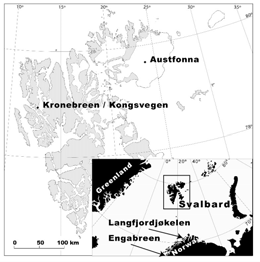
Rationale
Change in the volume of glaciers involves two main sets of processes, both of which are temporally and spatially variable: (1) surface mass balance; and (2) ice flow (dynamics). Interactions between these process domains can amplify glacier response to initial forcings, e.g., increased meltwater production can increase basal sliding, delivering more ice to regions of higher melt in a self-reinforcing cycle. Dynamic feedbacks also play a key role in thermal transitions, and the non-linear behaviour of calving glaciers, which in many parts of the world have undergone sudden thinning, acceleration, and retreat. Calving glaciers play a major role in delivering land ice to the world ocean2-4, and changes in the frequency of calving events may impact planned infrastructure and traffic related to sea transport, fisheries and oil exploration in the arctic, where activity is expected to increase significantly over the coming decades.

Fig. 3: Positive feedback between mass balance and glacier geometry enhanced by dynamics.
Predicting glacier response to climate change requires accurate parameterisation of surface and dynamic processes, and robust and versatile methods for modelling their evolution and interaction. The Norwegian component of Glaciodyn will address these issues in a set of complementary glacier observation and modelling programs focusing on four sites, representing the range of glacier types in arctic Norway.
The main objectives
[1] Quantify current mass budget of each glacier, including calving where applicable.
[2] Study subglacial processes; particularly interactions between hydrology and sliding.
[3] Test and develop a new model of calving processes.
[4] Develop numerical models, incorporating improved sliding and calving functions.
[5] Predict future glacier response to a range of climate change scenarios.

